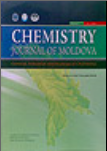Chemistry Journal of Moldova
2024 Volume 19, no.2
Author(s):
Field: Ecological chemistry
Type: Research paper
Issue: 2024 Volume 19, no.2
Pages: 101-112
Victor Ciornea, Silvia Eftodi, Corneliu Cojocaru, Elena Zubcov
Field: Ecological chemistry
Type: Research paper
Issue: 2024 Volume 19, no.2
Pages: 101-112
Full Text (PDF): Download
https://doi.org/10.19261/cjm.2024.1237
Graphycal Abstract: This study assessed water quality in Cișmea, Orhei district (coordinates 47°24’56.0"N 28°45’05.9"E). Surface and underground water were analyzed for pH, conductivity, hardness, chloride, sulfate, and chemical elements. The concentration values of the 36 elements determined by the ICP-OES method are presented. Conductivity and sulfate deviations indicated high dissolved solids. Results revealed significant deviations from permissible levels: As (1.7-1.9x), Cd (3.4-3.5x), Pb (1.2-2.3x), Na (1.2-4.0x), and B (1.6-3.3x). Notably, Ba, Tl, and Bi concentrations were also detected.
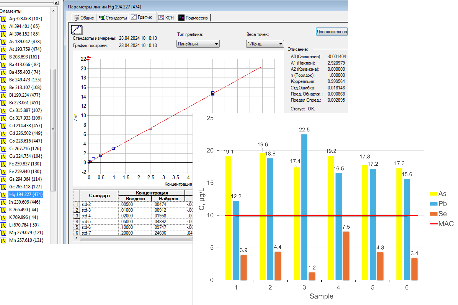
Downloads: 168
Author(s):
Field: Physical chemistry and chemical physics
Type: Research paper
Issue: 2024 Volume 19, no.2
Pages: 93-100
Sergey Travin, Gheorghe Duca, Oleg Gromov
Field: Physical chemistry and chemical physics
Type: Research paper
Issue: 2024 Volume 19, no.2
Pages: 93-100
Full Text (PDF): Download
https://doi.org/10.19261/cjm.2024.1234
Abstract (PDF)
Graphycal Abstract: This study investigates the radionuclide emissions from nuclear power plants (NPPs), focusing on the gas-aerosol emissions from reactors such as VVER-440. The radionuclide composition of these emissions is analyzed to determine the biological hazards they pose, particularly focusing on isotopes such as tritium and radiocarbon. The research highlights the patterns of radionuclide accumulation in fuel assemblies using "rank-size" coordinates, which provide a more visual and informative method compared to traditional atomic weight dependency analyses.

Downloads: 67
Author(s):
Field: Food chemistry
Type: Research paper
Issue: 2024 Volume 19, no.2
Pages: 16-27
Diana Crucirescu
Field: Food chemistry
Type: Research paper
Issue: 2024 Volume 19, no.2
Pages: 16-27
Full Text (PDF): Download
https://doi.org/10.19261/cjm.2024.1244
Abstract (PDF)
Graphycal Abstract: Apples of the Coredana, Golden Rezistent, Reglindis and Rewena varieties were studied. The quantitative and qualitative determination of organic acids and carbohydrates were using HPLC and CE methods. Determination of AA and TPC content was evaluated by spectrophotometric methods. The highest amount of organic acids was obtained in the 45th DAFB of harvest, the predominant being malic acid (15.09-21.64 g/100gDW). Sugars had the highest value in 97th DAFB, fructose being the main one (67.79-75.73 g/L). TPC and AA showed maximum values at the beginning of fruit harvesting, having 916.67-1316.13 mgGAE/100gDW and 16.94-23.51 mgAAE/100gDW, respectively. Unripe apples represent a natural source of organic acids and carbohydrates, significant amounts of polyphenolic compounds with antioxidant properties.
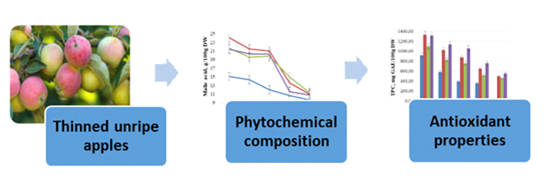
Downloads: 99
Author(s):
Field: Organic chemistry
Type: Research paper
Issue: 2024 Volume 19, no.2
Pages: 83-92
Mohamed Loughzail, Koffi Senam Etsè, Zaragoza Verez Guillermo, Rachid Touzani, Anna Moliterni, Mohamed Anouar Harrad, Abdessamad Tounsi
Field: Organic chemistry
Type: Research paper
Issue: 2024 Volume 19, no.2
Pages: 83-92
Full Text (PDF): Download
https://doi.org/10.19261/cjm.2024.1220
Graphycal Abstract: The compound 3-(2,4,6-timethyl-phenylamino)-but-2-enoate was obtained by the condensation reaction of ethyl acetoacetate and 2,4,6-trimethyl-phenylamine. X-ray structural analysis identified the structure of the synthesized β-enaminoester, NMR spectroscopy complemented it, and the structure stabilised by intramolecular interactions. The intermolecular contacts were further analysed by the mapping of contacts descriptors dnorm, de, di, the shape-by-shape index and surface property by electrostatic potential mapped on the Hirshfeld surface (HS). Global reactivity factors such as electronegativity, chemical hardness, potential, and softness were calculated using density functional theory. The effects of the molecular environment were accessed by analysing the electrostatic potentials surface mapped over the HS and the 3D-topology of energy frameworks. As a potential bioactive molecule, the physicochemical and ADME-Tox predictions were performed suggesting that title compound could be considered a promising drug candidate.
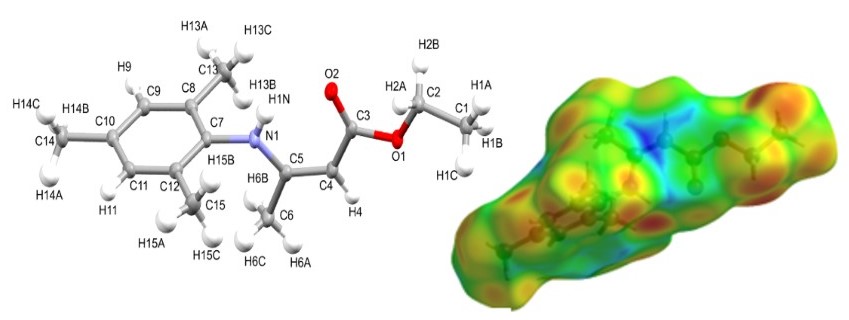
Downloads: 108
Author(s):
Field: Natural product chemistry and synthesis
Type: Research paper
Issue: 2024 Volume 19, no.2
Pages: 63-73
Lyubov Patrylak, Serhiy Konovalov, Stepan Zubenko, Angela Yakovenko, David Davitadze, Olexandra Pertko
Field: Natural product chemistry and synthesis
Type: Research paper
Issue: 2024 Volume 19, no.2
Pages: 63-73
Full Text (PDF): Download
https://doi.org/10.19261/cjm.2024.1236
Graphycal Abstract: The efficiency of removing glycerol, soaps, and unconverted acylglycerols from crude fatty acid ethyl esters by different techniques was evaluated. The proposed purification scheme allows for obtaining a product that meets the quality indicators of EN 14214 and can be used as a biodiesel fuel component.
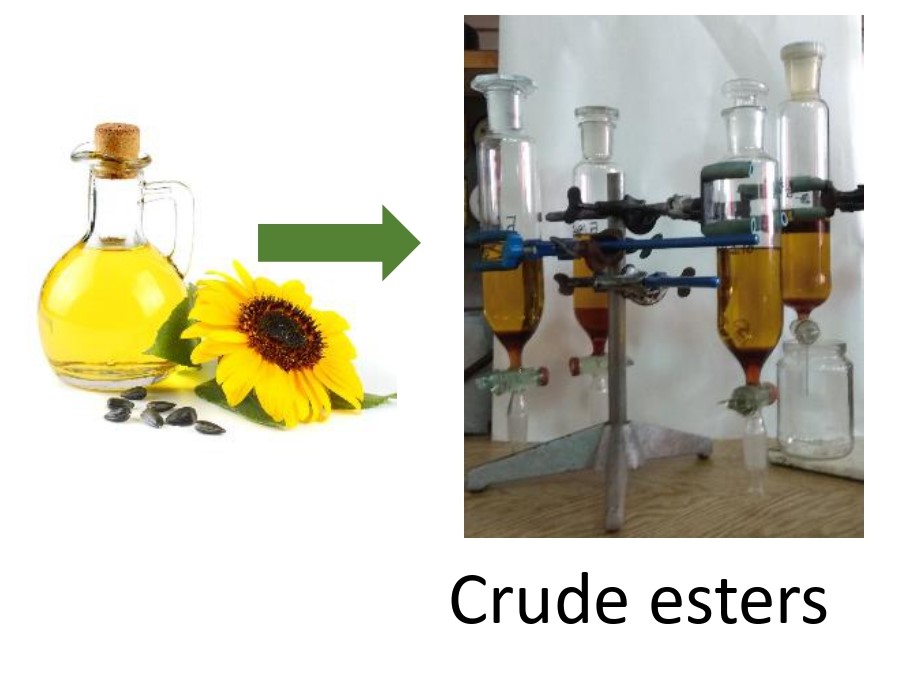
Downloads: 78
Author(s):
Field: Inorganic and coordination chemistry
Type: Research paper
Issue: 2024 Volume 19, no.2
Pages: 28-35
Kyrylo Tsymbaliuk, Оlena Martsynko, Viktoriya Dyakonenko, Оlena Finik, Inna Seifullina, Svitlana Shishkina
Field: Inorganic and coordination chemistry
Type: Research paper
Issue: 2024 Volume 19, no.2
Pages: 28-35
Full Text (PDF): Download
https://doi.org/10.19261/cjm.2024.1247
Graphycal Abstract: The present study describes synthesis, research and definition of the structure of five new coordination compounds of Germanium(IV) and 3d-metals with 1-hydroxyethane-1,1-diphosphonic acid and 1,10-phenanthroline, which in crystals are organic-inorganic hybrid ensembles with three-dimensional networks formed by numerous intermolecular hydrogen bonds between complex cations, anions, and crystalline water molecules.
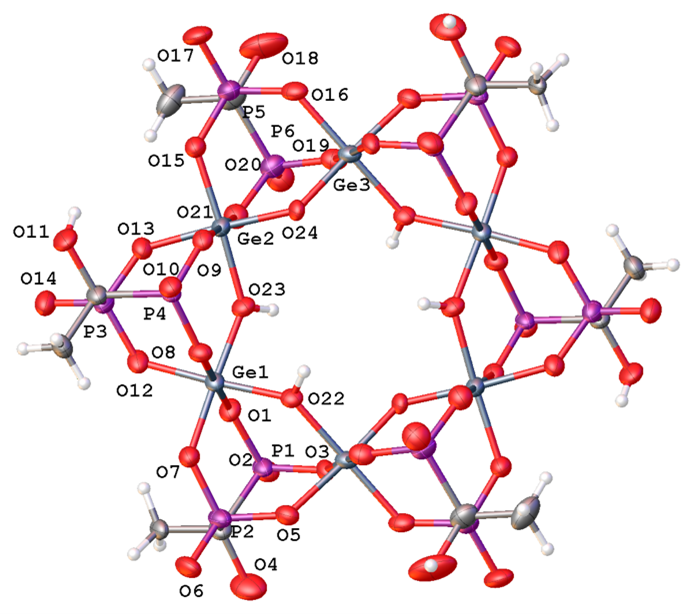
Downloads: 56
Author(s):
Field: Natural product chemistry and synthesis
Type: Research paper
Issue: 2024 Volume 19, no.2
Pages: 52-62
Radia Hannache, Radia Ayad, Nassima Boutaoui, Hayat Bourekoua, Mostefa Lefahal, El Hani Makhloufi, Nabila Souilah, Salah Akkal, Kamel Medjroubi
Field: Natural product chemistry and synthesis
Type: Research paper
Issue: 2024 Volume 19, no.2
Pages: 52-62
Full Text (PDF): Download
https://doi.org/10.19261/cjm.2024.1221
Abstract (PDF)
Graphycal Abstract: The current study aims to maximize the recovery of antioxidant phenolics from Algerian Trifolium tomentosum L. using an innovative green process: ultrasonic assisted extraction (UAE). Using response surface methodology (RSM), the optimal UAE parameters for maximum responses (total phenolic content, total flavonoid content, and total antioxidant capacity) were 70% ethanol concentration, 30.45 minutes of extraction time, and 75°C extraction temperature.
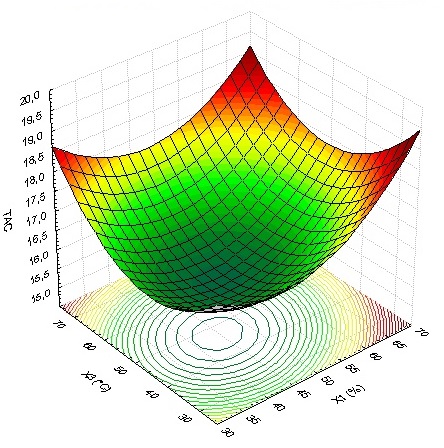
Downloads: 65
Author(s):
Field: Ecological chemistry
Type: Research paper
Issue: 2024 Volume 19, no.2
Pages: 7-15
Nurfitrah Amran, Siti NurSyazwani Maadon, Yamin Yasin, Nik Rozlin Nik Masdek, Mohd Rafii Yusop, Nor Hazlina Mat Sa’at, Nor Monica Ahmad, Nor’Aishah Hasan
Field: Ecological chemistry
Type: Research paper
Issue: 2024 Volume 19, no.2
Pages: 7-15
Full Text (PDF): Download
https://doi.org/10.19261/cjm.2024.1196
Graphycal Abstract: The present work explored the synthesis of ZnO nanoparticles using rice husk waste. The characterisation by UV-Vis spectroscopy suggested the formation of ZnO.
Analysis of X-Ray diffraction analysis (XRD) confirms the purity of the NPs with a crystallite size of less than 21 nm.Fourier transform infrared spectroscopy reveals the significance functional group at 487 cm-1.
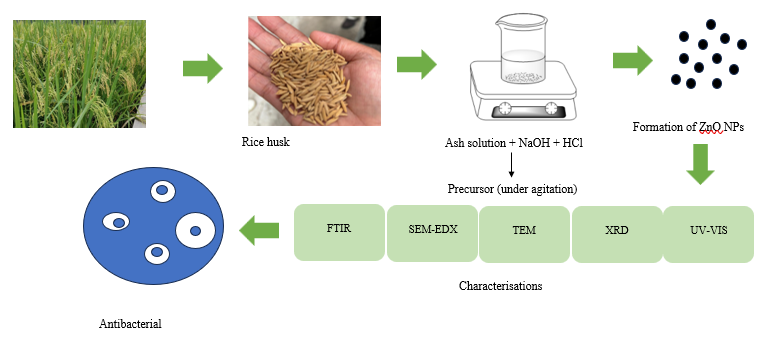
Downloads: 58
Author(s):
Field: Natural product chemistry and synthesis
Type: Research paper
Issue: 2024 Volume 19, no.2
Pages: 45-51
Amina Mazeri, Achraf Khaldi, Mehdi Kheira, Adel Benarfa, Hadjer Saber
Field: Natural product chemistry and synthesis
Type: Research paper
Issue: 2024 Volume 19, no.2
Pages: 45-51
Full Text (PDF): Download
https://doi.org/10.19261/cjm.2024.1219
Graphycal Abstract: The essential oil of Marrubium deserti from Bechar (Algeria) was investigated to determine its chemical composition, physico-chemical characteristics,the antibacterial and antifungal activities. The findings showed that α-phellandrene (25.05%), β-pinene (14.05%), and α-pinene (12.83%) were the major compounds of this oil. Moreover, it was displayed that the studied essential oil has good antibacterial power as well as a strong inhibitory effect on spore sporulation, germination, and pathogen fungus development.
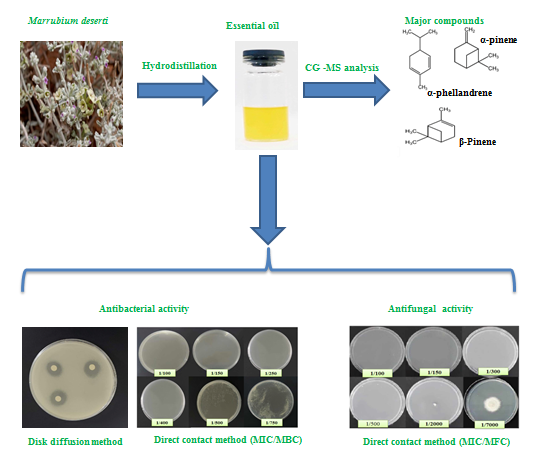
Downloads: 98
Author(s):
Field: Organic chemistry
Type: Research paper
Issue: 2024 Volume 19, no.2
Pages: 74-82
Mohamed Anouar Harrad, Adnan Semane, Mohammed Badereddine, Abdessamad Tounsi
Field: Organic chemistry
Type: Research paper
Issue: 2024 Volume 19, no.2
Pages: 74-82
Full Text (PDF): Download
https://doi.org/10.19261/cjm.2024.1199
Graphycal Abstract: With ZnAl2O4@ZnO as a catalyst, an environmentally eco-friendly and highly effective method was developed for regio-and chemo-selective bis enamination of 1,3-dicarbonyl compounds and aromatic, aliphatic primary amines. A wide variety of bis-(β-enaminones) and bis-(β-enaminoesters) can be synthesized using this highly versatile method which offers good yields.

Downloads: 73
